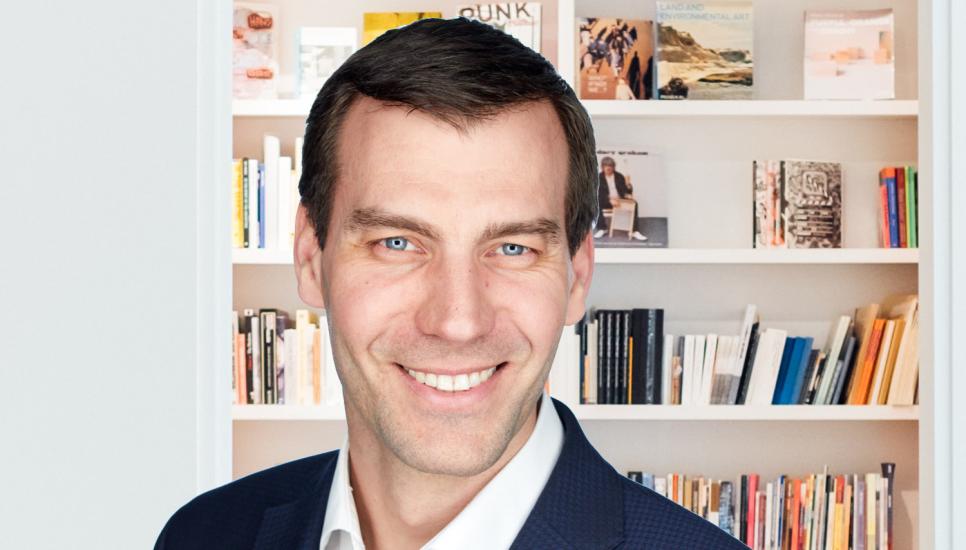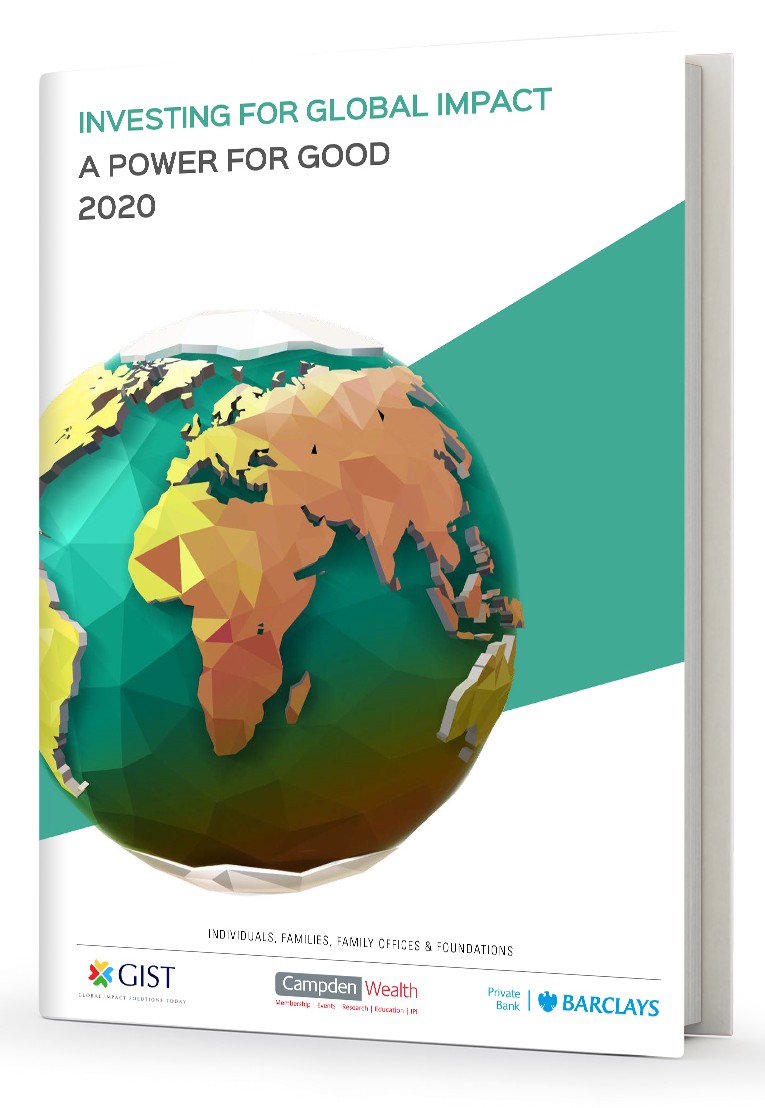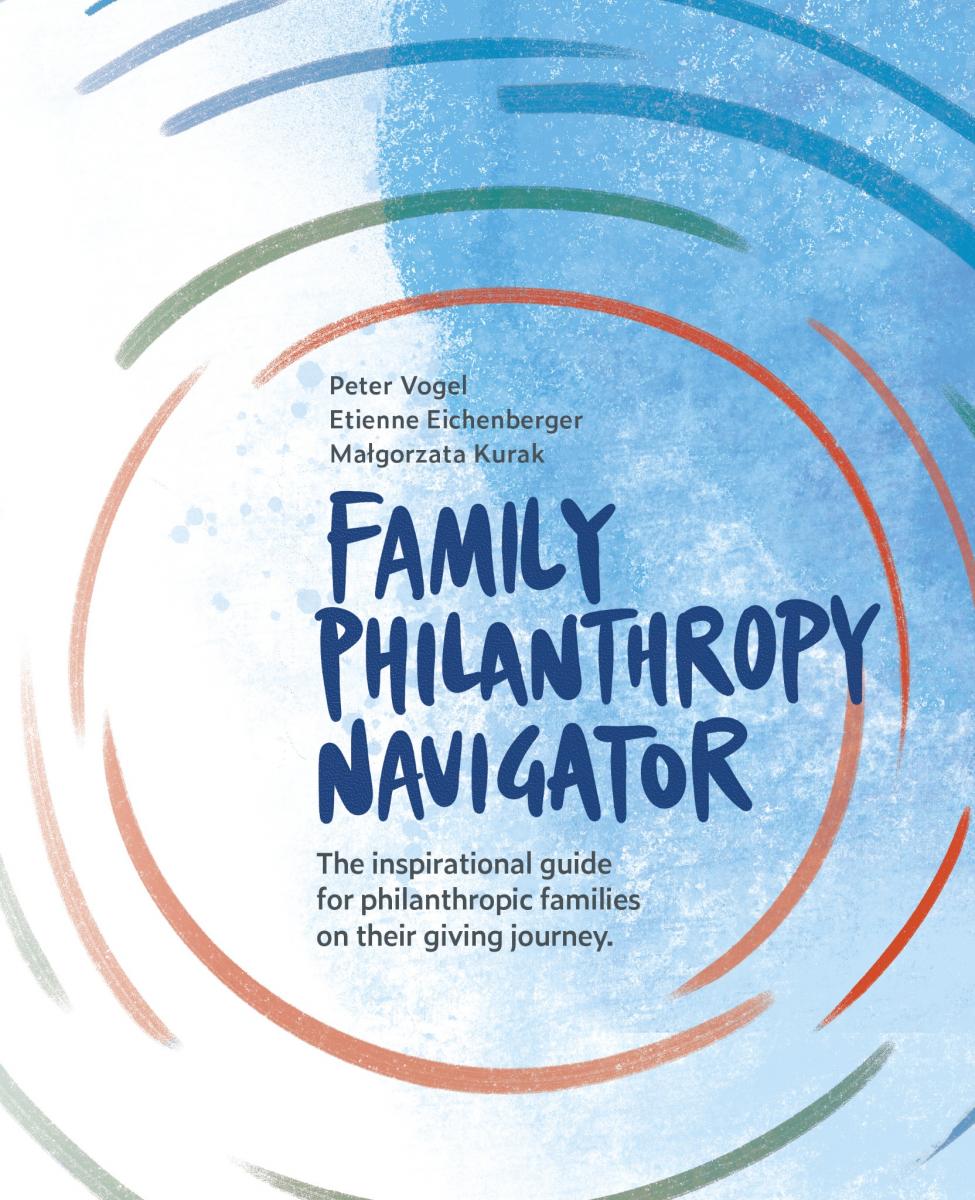Next generation takes philanthropy to the heart of family business

The altruistic next generation of family business leaders is the driving force behind families increasingly integrating philanthropy into their business practices, but they want to effect positive change now, rather than leave charity to the family legacy.
Technology is democratising giving and enabling family philanthropists to respond and measure in real-time. However, the Covid-19 crisis has not—and will not—change the fundamental patterns of giving, only exacerbate existing issues.
In conversation with CampdenFB, Prof Peter Vogel (pictured) shared his observations on the latest trends in philanthropy he sees in his research, teaching and advisory work with global families. Vogel is professor of Family Business and Entrepreneurship and the director of the International Institute for Management Development's (IMD) Global Family Business Center. He holds the Debiopharm Chair for Family Philanthropy at IMD and a PhD in Entrepreneurship from EPFL (Ecole polytechnique federale de Lausanne).

For his latest book, Vogel collaborated with Etienne Eichenberger, managing partner of WISE philanthropy advisers, and Malgorzata Kurak, IMD research fellow, to write the Family Philanthropy Navigator. The book aims to offer an easy-to-use, step-by-step inspirational guide for new and existing philanthropic families to initiate or enhance their journey in giving.
CampdenFB asked Vogel where philanthropic families should begin their journey, the relationships emerging between traditional and new forms of giving, how families can really measure outcomes and the seismic influences of technology and the Covid-19 pandemic.
How should families decide which cause to support?
The Family Philanthropy Navigator is structured in a very logical way. We go through the typical ‘W’ questions, starting with the ‘Why, What, Who and How.’
The ‘Why’ is effectively the beginning, the motivation where you start. The causes you support is already the ‘What’ question and there's a very natural link between the two. The family first needs to have clarity and alignment on why they want to get involved in philanthropy and only then can they really think about the ‘What’.
In some situations, families would immediately jump to the ‘What’. Imagine the situation where one family had a family member who suffered from a specific disease then the ‘What’ is pretty much pre-defined. In other cases, families start much broader and say we care about the environment, or climate change or mental disorders, then go more specific.
I think there are several interesting trade-offs when it comes to selecting the cause. On the one side, the family need an alignment with their motivation. They need to think about how broad or deep or specific they want to go when it comes to picking a cause and supporting a cause.

Then the other question is, 'Do we want to support initiatives that address the root cause of the problem or do we want to support initiatives that treat the symptoms, or the effects?' Imagine a family member is affected or suffering from Alzheimer’s; then the motivation is, of course, to help other Alzheimer’s patients, or help people not get it in the first place. You could go broad by saying we want to help out with initiatives that address any type of mental disorder, or you go deep and you focus on Alzheimer’s.
The other trade-off is where you could say, well, we want to go to the root cause so we fund fundamental research to try to find preventive treatments or a cure, or you say we go to the symptoms and we help families and individual caregivers who are suffering from Alzheimer’s handle the situation or caregivers, so there are many types of that kind of decisions.
Then you need to think where geographically you want to focus and if there is a strategic link to the family business or not. You can seek inspiration from, for example, the UN Sustainable Development Goals, which are a good start when it comes to societal and environmental types of topics. There are cultural activities you can support, such as museums, music theatres, and there are religious activities.
Start off with knowing why you want to get involved in philanthropy—is it for family legacy, or to do something specific? Or do you start with a clean sheet of paper after having decided to get involved in philanthropy and only then start looking for a cause. I think that is quite decisive.
 Should principals use philanthropy to engage and educate their next generation in the family business?
Should principals use philanthropy to engage and educate their next generation in the family business?
Yes, absolutely, I think philanthropy is an incredible vehicle to do that. We see many families leveraging philanthropy for that very purpose. There are several key strategic advantages to the family and one is the education element. It’s about transmission of values, teaching them about financial literacy and it gives them an opportunity to collaborate across generations.
I think there are many opportunities in leveraging philanthropy strategically and specifically from an educational point of view and the transfer of social capital.
 Is there a generational clash between legacy philanthropy and sustainable/impact investing?
Is there a generational clash between legacy philanthropy and sustainable/impact investing?
We see a number of trends in philanthropy and in this, what we call the third-wave of philanthropy, we see a push towards more effective giving and a focus on issues. We see more hands-on active philanthropists, we see next-gens driving the agenda and saying. 'We want to make a difference now. There are some big issues in the world. We need to fix them, let's not wait,' which often changes the structures of giving, saying, 'Let’s not have perpetual funds, let’s focus on spending down to make a difference now and not only work with proceeds over 20-years or 100 years.'
We see a lot happening at the intersection of charitable giving, business and traditional investing and there is a lot of opportunity. One thing that we see is that families are starting to think in a more holistic cohesive way, finding strategies spanning the traditional business all the way over to their charitable giving with everything in between, so sustainable finance/impact investing is one of the activities that families should be thinking about in their portfolio.
 Do you see families integrating ESG practices into their businesses as a supplement or even a replacement for side-project philanthropy?
Do you see families integrating ESG practices into their businesses as a supplement or even a replacement for side-project philanthropy?
This brings me back to the cohesive element. It’s true that traditional philanthropy is not only regarded as something positive, because historically you would see philanthropy as a distinctly different activity from the business.
That mindset is shifting and we also advocate such a shift of mind. Let's not keep these things separate anymore. Let’s bring a business type of mindset into philanthropy and let's bring a philanthropic type of mindset into business and I think that goes exactly into that question. Today, there is a clear push towards finding collective "doing good while doing well" strategies for the families and their full spectrum of investments, including their legacy businesses.
We see a lot of philanthropy-inspired business model transformations, but if done right, philanthropy is not competing with sustainable business models and vice versa. These are complementary, they all have their own right of existence, just like impact investing. But I do think the more successful, the more mindful families with a "doing good while doing well" strategy, leverage the different vehicles for different purposes and they do it in a very strategic way. I think it's not an either-or question, but an as-well-as question.

Should families accept, seek or avoid public awareness of their philanthropic activities?
This is unique to every family and there is no one answer to this. It is inherently linked to the purpose of giving.
Overall, we see three types of motivations and you can draw it up like a Venn diagram, with the three circles being: family first, business first and cause first. There are evidently also hybrid motivations at the intersections of these circles. Coming back to the question of public visibility: If the main motivation of giving is driven to unite the family or to educate the next generation—those are very internal drivers—then I don't see a massive value in being overly public about it.
If you’re more about advocacy, scale and impact and tackling an issue, like Bill and Melinda Gates and their efforts towards eradicating Ebola, then it makes a lot of sense to be outspoken about it, because they know they alone cannot do it. In such an advocacy type of initiative, I would say the more people talk about it, the better.
If your motivation is about, ‘Let’s get our three fighting family branches united around a common theme’, then it's important to realise that philanthropy isn't always the cure for every family issue. Many families might think that, but it’s not the case. Quite the contrary. Conflicts between family members or branches can actually be aggravated through highly emotional discussions around giving.
There are also huge cultural differences. We interviewed about 70 major philanthropic families from around the world and there are many religious and cultural differences on whether it is acceptable to be public. There are cultures and religions where it’s expected from every human being to give back, so they say, ‘Why should I brag about it? I'm expected to do it anyway.’
 How can families measure the success or otherwise of their philanthropy?
How can families measure the success or otherwise of their philanthropy?
This goes into the question of impact and learning. In our navigator framework, we have two inter-related dimensions: ambition and impact. In the ambition, you define what you want to achieve—how big should it get, how strategic or not, and ultimately what your KPIs are, including whether they are quantitative or qualitative.
Not every type of philanthropy is measurable in numbers. Helping a specific number of students successfully graduate from school is something you can easily quantify, but you could also look at it qualitatively by saying that the children you helped graduate from school had a better life afterwards, for example, by keeping track of them via interviews or stories.
In the impact dimension of our navigator, you then start to measure against the goals you set for yourself in the ambitions section. 'Have we achieved what we want to achieve?' You start measuring, either through self-evaluation or through external evaluation, it can be data-driven, it can be intuition-driven.
Whatever you define as your KPIs, you need to benchmark against and then you need to be self-critical and challenge your own assumptions over time. That's where learning comes in.
 How is technology changing family philanthropy?
How is technology changing family philanthropy?
In the third wave of philanthropy, as we call it, there are major changes. Technology is massively influencing the giving space in many ways. Through the web we all have a global real-time awareness of what's going on. For example, if there is a tsunami or an earthquake somewhere in the world and there is a need to help, people are aware of that in real-time and, through online fundraising campaigns, they can help immediately. This was not possible just three decades ago.
Also, when it comes to how we give, I think the internet has empowered us all to collectively join forces. Philanthropy is no longer reserved to a small elite of affluent individuals or families. It's democratised, everybody can give and not just in the collection in church.
Everybody can contribute through online marketplaces, crowdfunding and crowd lending platforms, social media-driven initiatives and fundraisers. Everybody can now get involved and make a difference. I think this is quite exciting.
 Education was the number one area families cited giving to globally, constituting 29% of the average philanthropic portfolio, followed by health (14%) and art, culture, and sports (10%), according to the Global Trends and Strategic Time Horizons in Family Philanthropy 2020 report by Campden Wealth with the Rockefeller Foundation. Do you think the coronavirus crisis will change the causes philanthropic families support and how much they give?
Education was the number one area families cited giving to globally, constituting 29% of the average philanthropic portfolio, followed by health (14%) and art, culture, and sports (10%), according to the Global Trends and Strategic Time Horizons in Family Philanthropy 2020 report by Campden Wealth with the Rockefeller Foundation. Do you think the coronavirus crisis will change the causes philanthropic families support and how much they give?
I think in the grand scheme of things no, in specific local initiatives, probably yes.
UNESCO estimates about 24 million learners from primary to university level are at risk of not returning to school due to Covid-19. There are many SDG related issues that have worsened due to Covid measures and I think this is something we have to be mindful of.
Before the pandemic, we were already off-track to end poverty by 2030, which is SDG number one. Without Covid, we would have reduced extreme poverty to 6%, according to UNESCO predictions, and now Covid has caused the first increase in global poverty in decades. More than 71 million people were pushed into extreme poverty in 2020.
The fundamental patterns of giving have not changed and will not change because Covid is just an enhancement of existing issues. There might be a shift because there are certain SDGs, particularly environmental SDGs, that have actually benefitted from Covid, at least in the short-term. The pandemic has been a catalyst towards achieving certain SDGs and now the risk is falling back into certain patterns.
Covid has been quite detrimental on the social side, so I think those are the grand schemes that we see, but I think fundamentally people will focus on the issues that they care about, maybe focusing on other types of organisations.
My hypothesis is that education will remain as the single biggest area where families give.
 What can be done to encourage families to give where the need is greatest in society, which may not be the most glamorous causes?
What can be done to encourage families to give where the need is greatest in society, which may not be the most glamorous causes?
That’s a tricky one because people give for various reasons and, while there are often altruistic elements in giving, often there is also self-interest in giving.
I think it’s easier to relate to a cause where you say, 'Let’s help a child get a school degree' and you feel good afterwards because you see this child flourish, than to work with children who are violent, have dropped out of the system for whatever reason because it’s tougher to work with.
If there is self-interest, there might always be a tendency to work with the causes that also make you feel good, but there are luckily also many philanthropists who focus on the more troublesome and less glamorous topics and that is very important. We should not prescribe to people what they should be doing.
It’s incredibly important to be mindful of state-wide and co-ordinated efforts and not lose sight of big structural issues over more short-term motivations.






